By Rick VanSickle
Icellars Estate Winery has quickly established itself as the “house of reds” in Niagara with Cabernet Sauvignon firmly at the top of the hierarchy.
Forty-five acres of the 60-acre estate, located on Concession 5 Road in Niagara-on-the-Lake, is planted to 95% red grapes and 45% of that to Cabernet Sauvignon alone. It’s no surprise that the top wines, and certainly the most expensive, are single-variety Cabernet Sauvignons and dominant Cab Sauv blends all the way up to the signature Wiyana Wanda 2016.
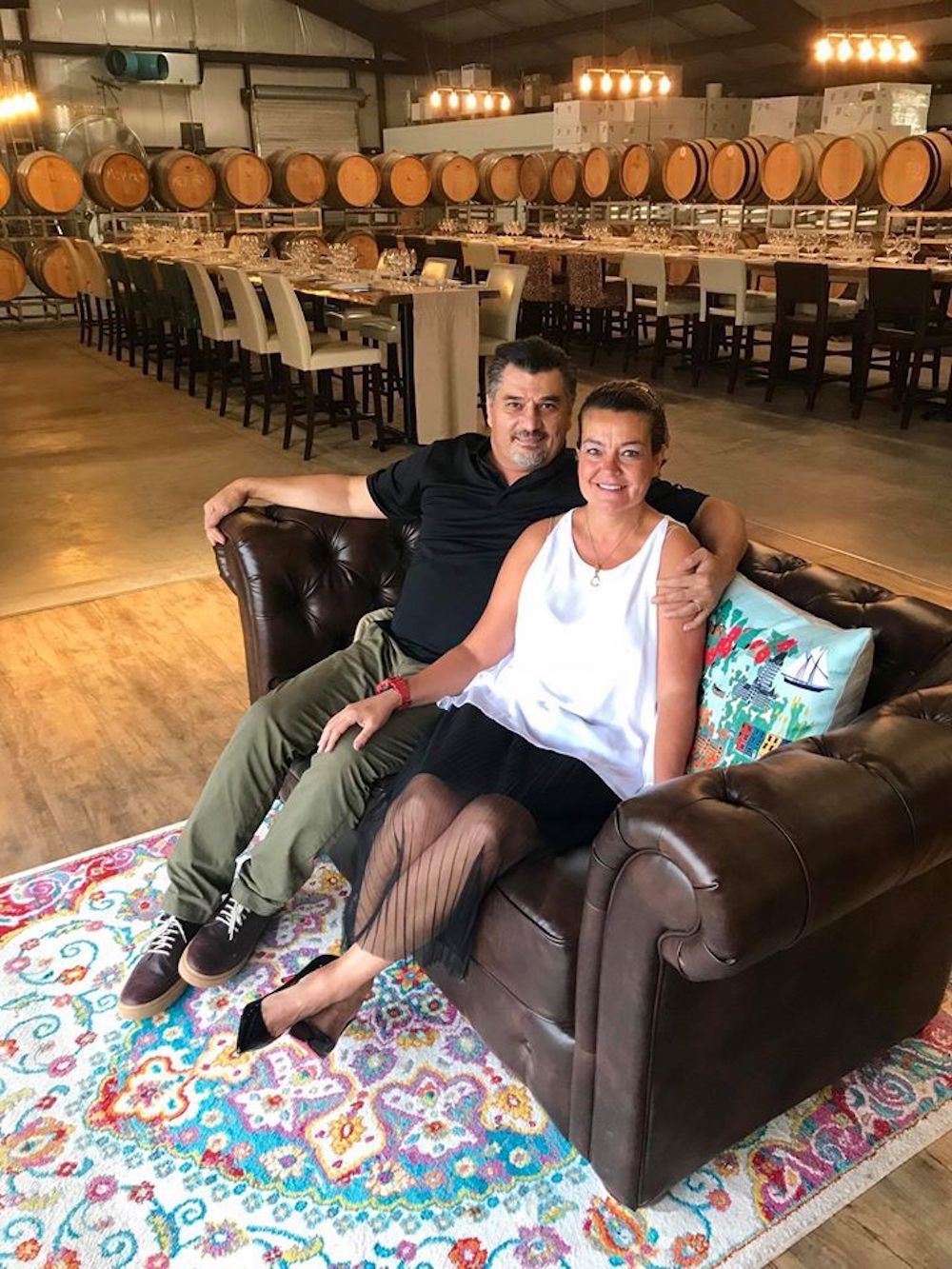
The story of how Adnan and Elif Icel, above, ended up making wine in Niagara is inspiring, and I documented their story in a previous post you can read in full here. In short, Adnan Icel and his family immigrated to Canada from Turkey with no wine experience to speak of — either drinking or making. Adnan brought with him an MBA degree and his career as a mechanical engineer that he parlayed into a successful company building pre-engineered steel residential and commercial buildings as CEO of Trimetal Engineering Inc., a firm he founded and owned in Turkey and then moved it to Oakville when he and his family came to Canada in 2006. He “semi” retied from his business shortly after he moved to Oakville with a dream to try something completely different — farming.
The beauty of Niagara caught his eye and after searching for farmland, came upon the property he ended up purchasing.
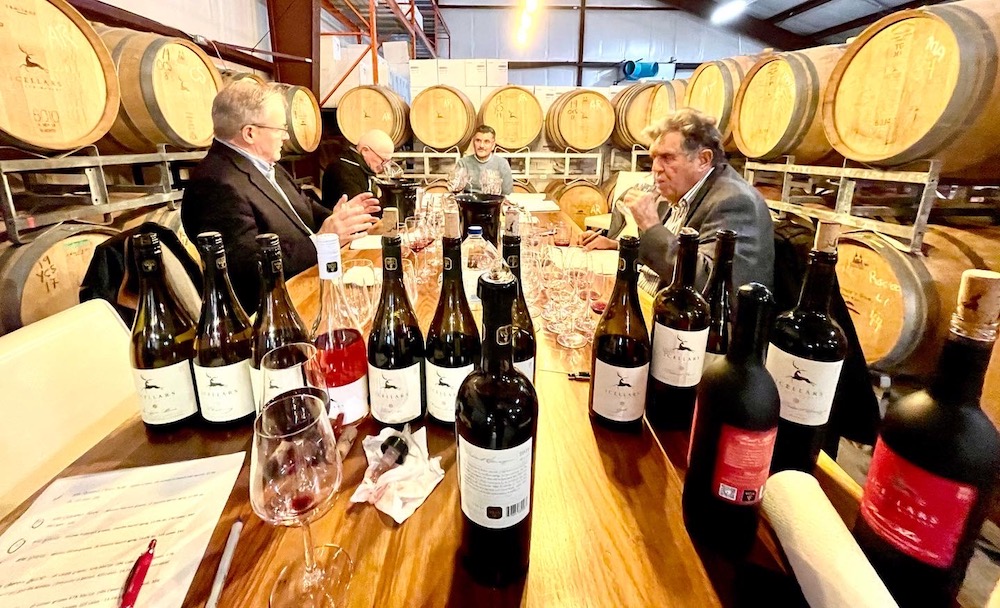
The farm was nothing but 60 acres of fallow fields with plenty of potential. So Adnan did what any successful mechanical engineer would do. He built a 20,000 square foot winery, planted grapes and taught himself how to make wine.
The first wine Adnan made was in 2011 after reading a how-to book on winemaking. He describes that first wine as “excellent,” which prompted him to attend “hundreds” of winemaking seminars, reading “hundreds” of books on the subject and a journey of discovery to the great wines regions of the world to taste as many wines as he could to learn what it was he liked and wanted to emulate from his little patch of Niagara. He fell in love with Napa Valley after tasting some of the best wines the region has to offer — Opus One, Shafer, Robert Mondavi, up and down the Silverado Trail and Highway 29, tasting after tasting.
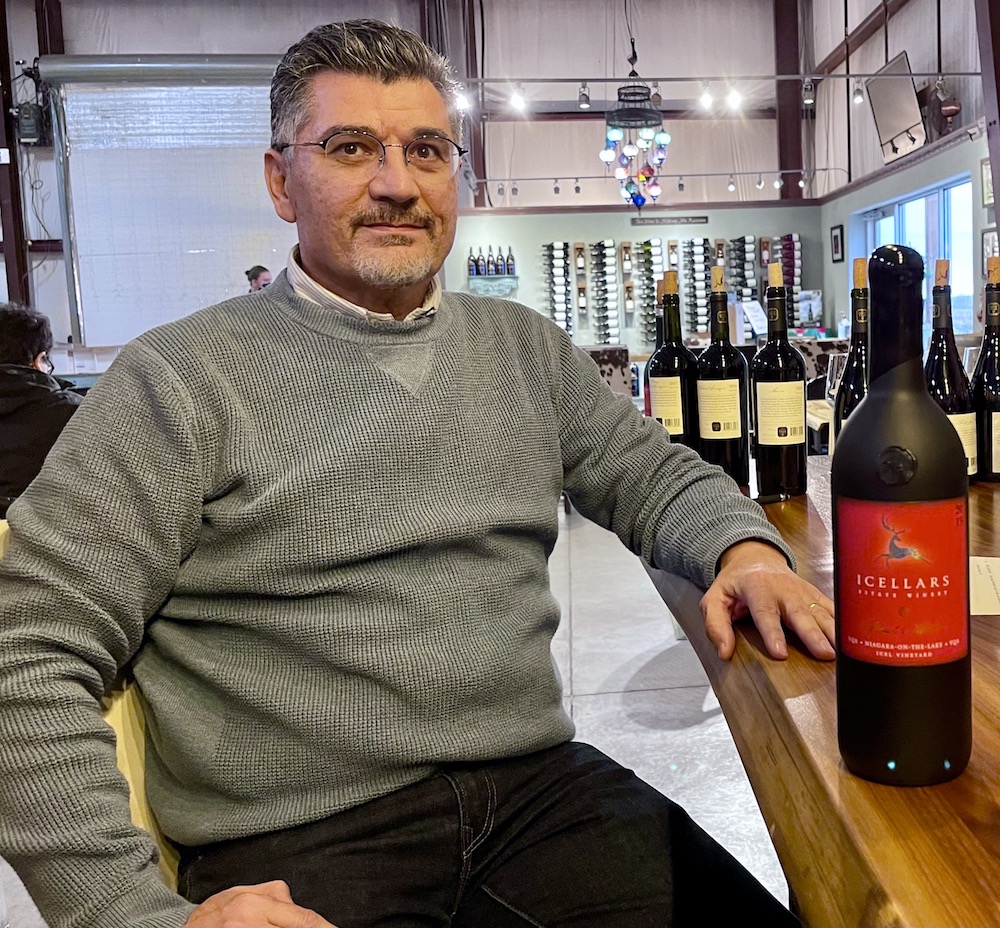
So, naturally, Adnan focused his plantings on Cabernet Sauvignon, Cabernet Franc, Merlot and Syrah with tiny plantings of Chardonnay and now, Viognier, mostly as a blender with Syrah, and a bit of Pinot Noir.
The wines are crafted by Adnan and assistant winemaker Robbie Day, a Niagara College grad, with careful onsite consultation from Peter Gamble.
The estate vineyard is in the process of being certified organic, led by “our brilliant vineyard manager Mark Williamson, a Niagara College graduate, too,” says Adnan. “His meticulous care of our 45 acres transitioned us to organic farming successfully in a difficult year like 2021. I believe these two young men will be among the most sought after winemakers of the country in five to six years. I am so lucky and proud to have and mentor them.” Adnan is hoping the farm will be certified organic in time for the 2023 vintage.
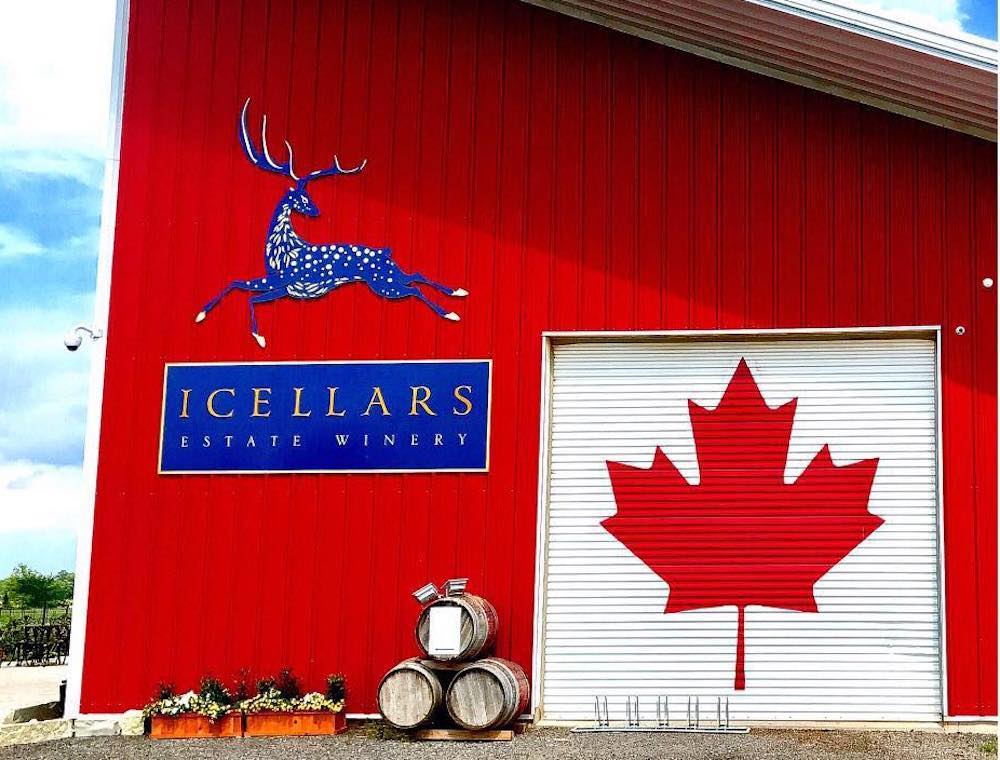
The winery building was designed and built on the principles of having everything under one roof, creating a simple yet functional space. Small lot wines are processed separately by gravity flow in an environmentally friendly design. A bottling line and his own labelling capabilities were recently added.
While production is still tiny, Adnan hopes to grow the portfolio from 3,000-4,000 cases to 10,000 cases by 2023. While his goal is to only use 100% estate fruit, he presently sources a few varieties such as Sauvignon Blanc, Cabernet Franc, Syrah and grapes for his rosé while new plantings come to fruition.
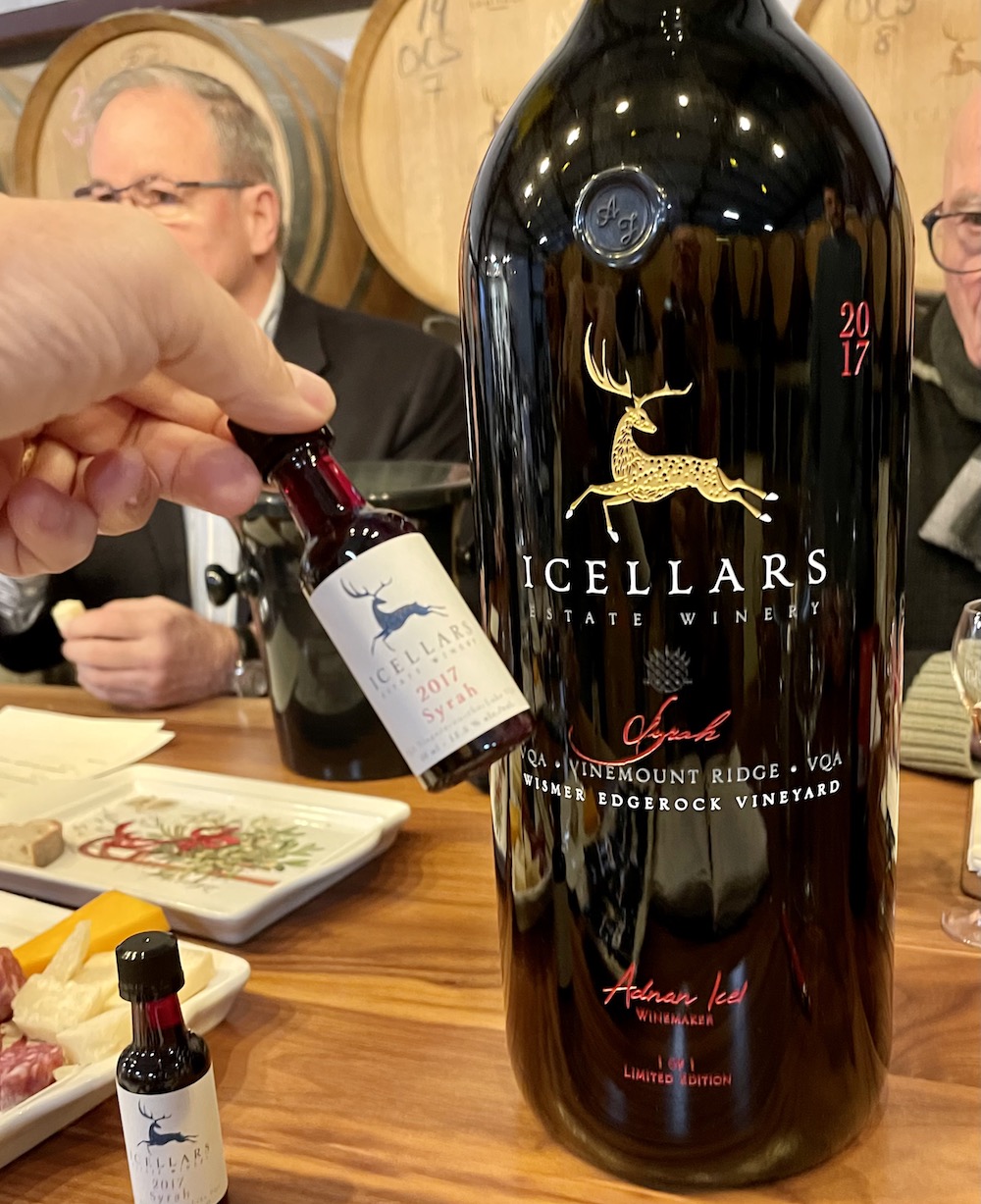
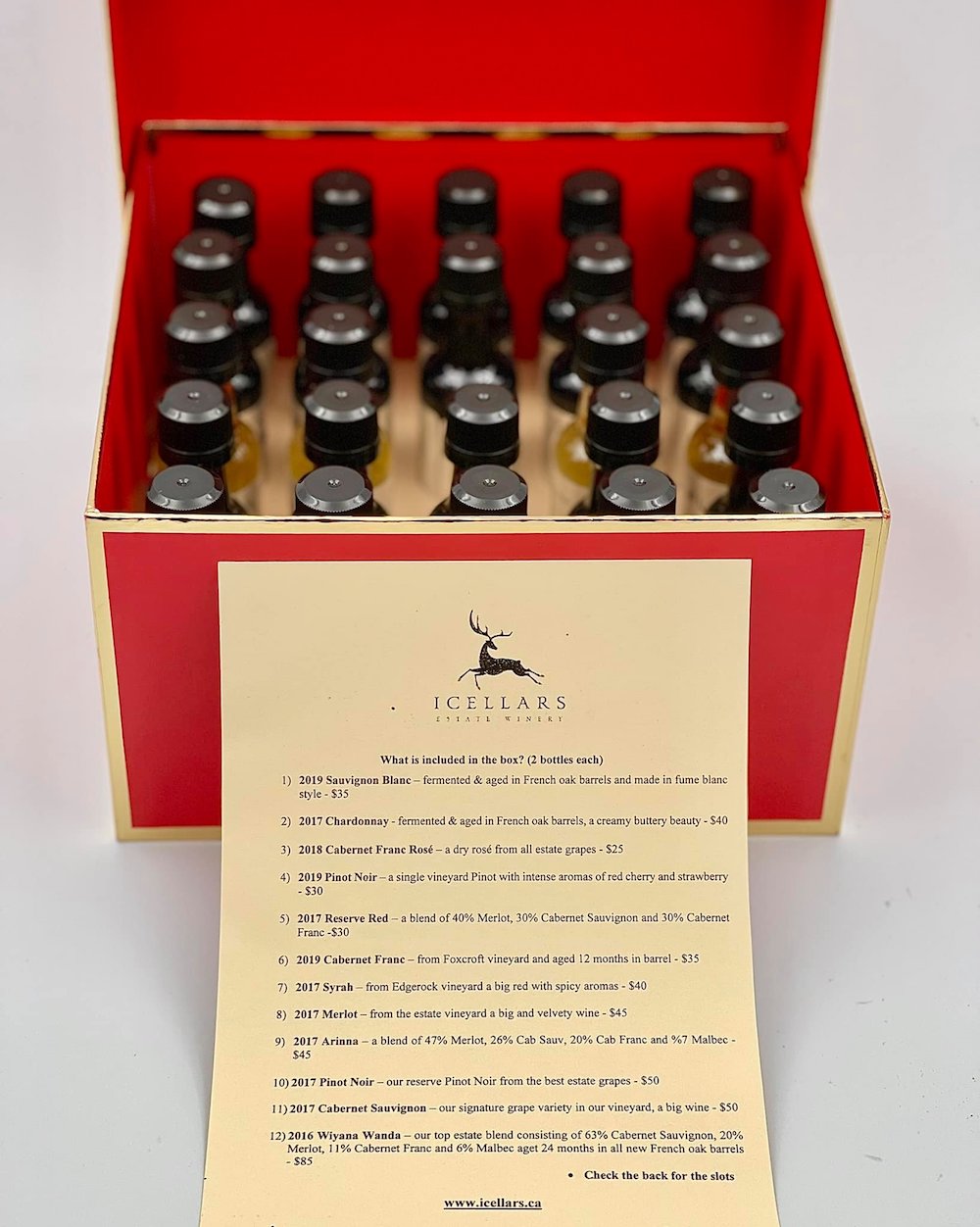
And while the team is clearly focused on the bigger red wines (many in large format) made in a traditional style, they aren’t afraid to try new things. The latest wine, a 2019 appassimento style red blend called Red Velvet, is proof of that.
Adnan, Gamble and Day revealed the first appassimento wine to our small circle of tasters last Friday that included wine writers Tony Aspler and Michael Vaughan. It comes packaged in a show stopping, painted black bottle with wax dipped topper and a striking red label all contained in a red velvet bag. The wine we tried was only two days out from bottling and it’s not really fair to fully review the wine, but it was intriguing, to say the least.
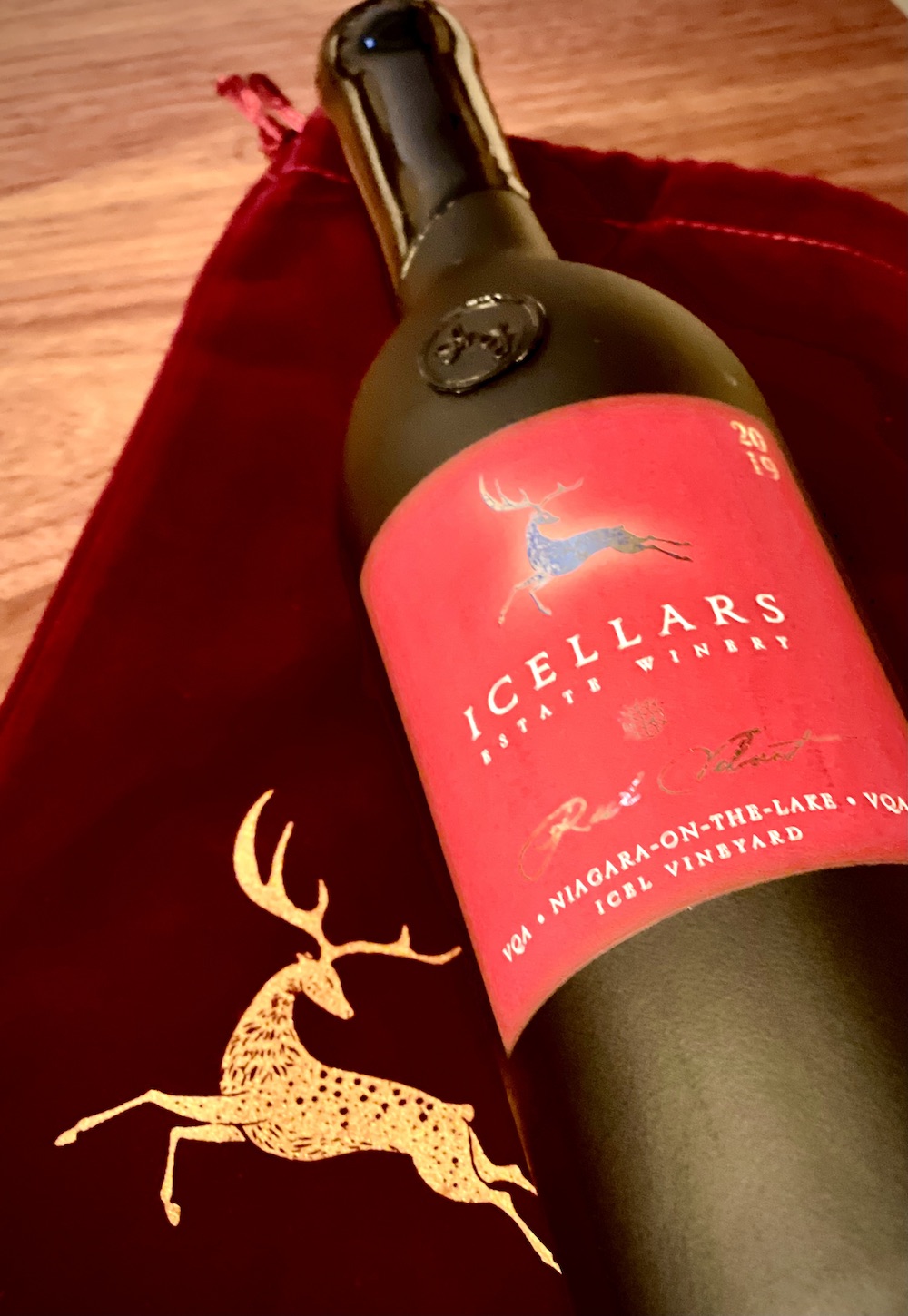
It’s a blend of 67% Cabernet Sauvignon (the dried part) with Malbec and Merlot that saw 24 months of oak aging in new, one-year-old and two-year-old barrels.
The Cab Sauv grapes were picked on Dec. 7, 2019, long after a lot of the icewine grapes were harvested that year in Niagara and what Adnan calls the “latest picking day in the Northern hemisphere” for Cabernet Sauvignon.
“Cab Sauv grapes went through a few freeze and thaw cycles before picking,” he tells me later. “And, if I am not wrong, there was an official icewine picking window on Nov. 21 or so. This happened for the first time for us (maybe for other wineries too). It was the first time we picked red wine grapes after an official icewine picking day. So the unique taste and flavour of the 2019 Red Velvet is coming from this very very rare event.”
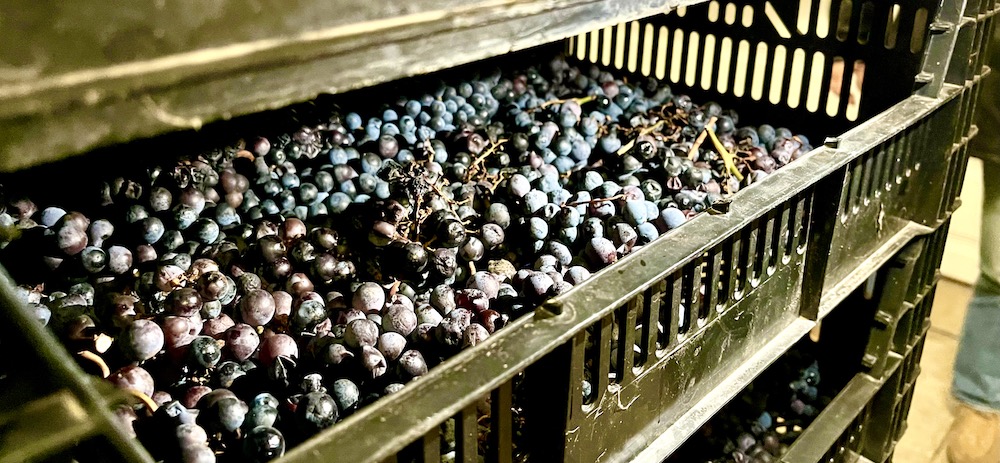
The Brix at picking were 23.7 and after the grapes naturally dried inside the retail facility, “to our surprise” it reached 33 Brix in only 14 days. “We had 1,000 kg of fresh grapes and after drying we had 430 kg of grapes to process. The original alcohol was around 18% before the Malbec and Merlot were blended a year later.” The alcohol ended up being 15.8% with the sugar at a surprisingly dry 2.5 g/l.
As noted, an intriguing wine that will be fun to watch as it integrates in the bottle over many years of cellaring.
I talk more about the Red Velvet in the notes below after our tasting of over 20 wines over several hours on Friday.
Here is what I liked:
Note: All of these wines reviewed below (unless otherwise noted) are available for purchase either online or by asking at the winery.
The white wines
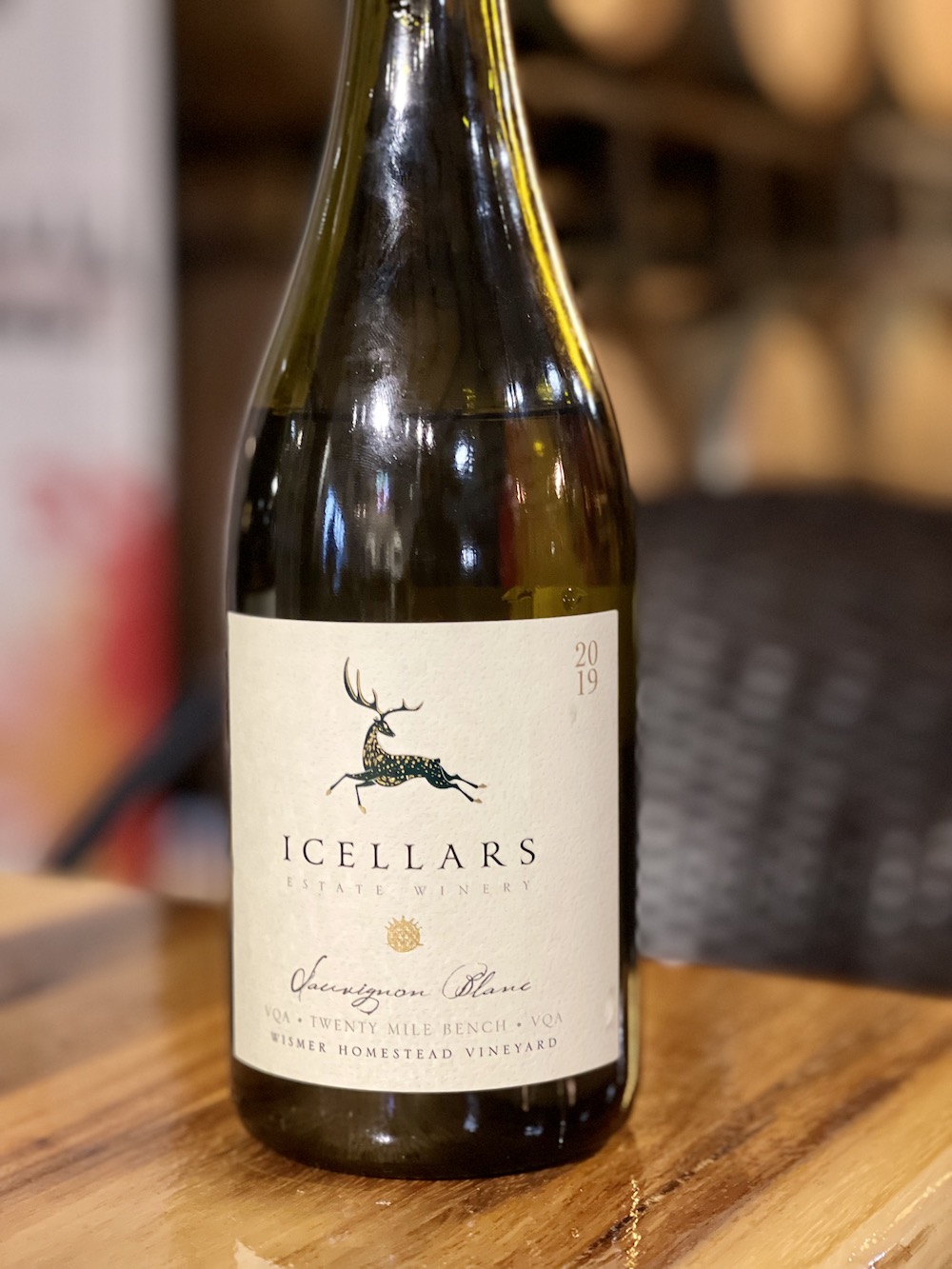
Icellars Sauvignon Blanc 2019 ($35, 90 points) — The grapes for this fume blanc style of Savvy are sourced from the Wismer Homestead Vineyard on the Twenty Mile Bench. The fruit was hand picked, had 18 hours of skin contact, was fermented and aged in French oak with regular lees stirring. It’s quite fragrant on the nose with a lovely herbaceous note to go with passion fruit, grapefruit, guava and spice with a mineral component. It’s round and textured on the palate with citrus, herbs, some tropical fruits, elegant spice notes and fresh through a vibrant finish.
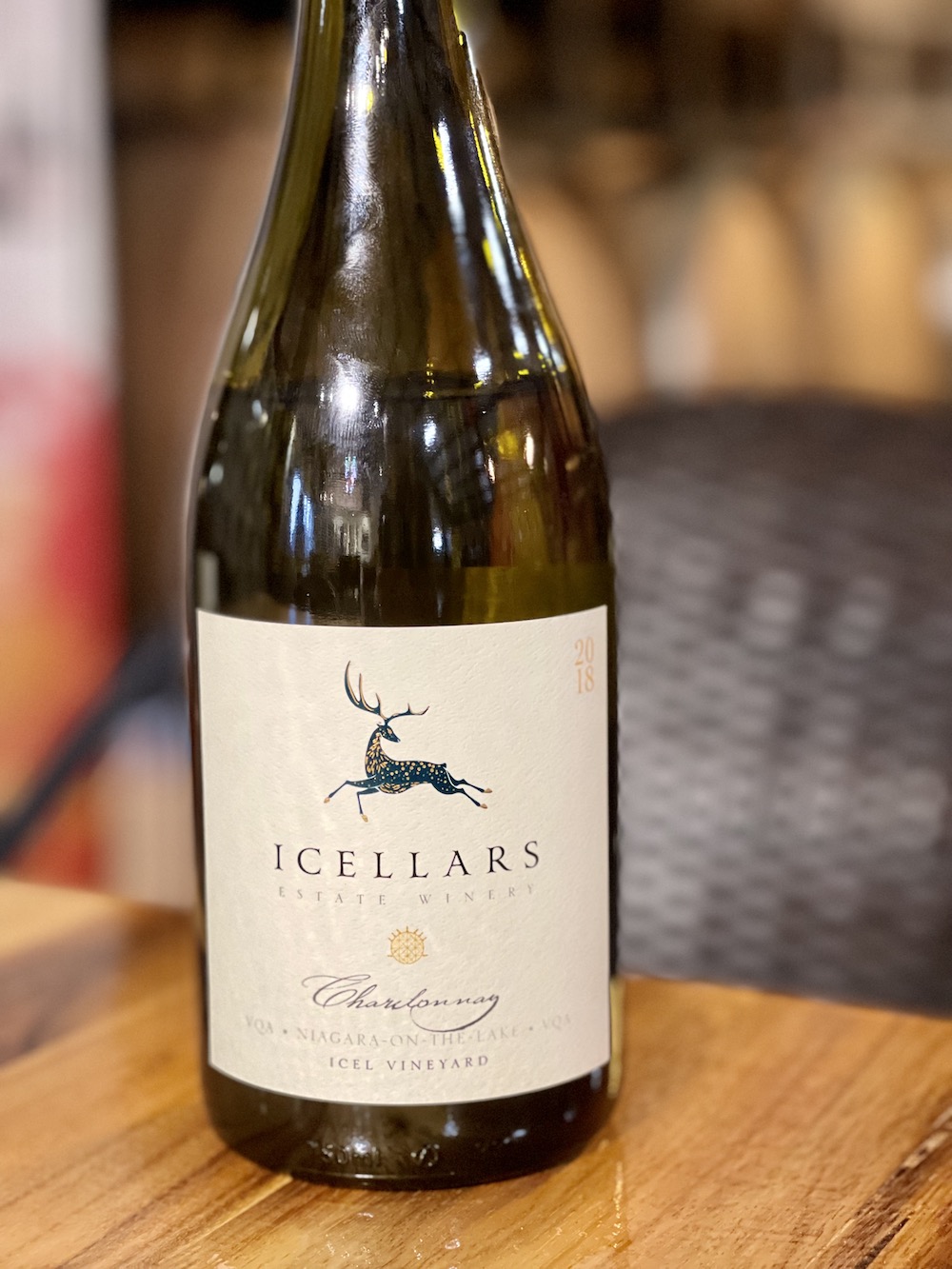
Icellars Chardonnay 2018 ($40, 91 points) — This is the only estate grape made into a white wine at Icellars. There is a small amount of Viognier, but it is used as a blender with Syrah. It was fermented and aged in French oak barrels for 12 months. It has flinty nose with pear, ripe apple, lemon drop, coconut and toasted spice notes. It’s more rounded on the palate with richer pear notes, baked apple, lemon accents and spices with fairly bright acidity on the finish.
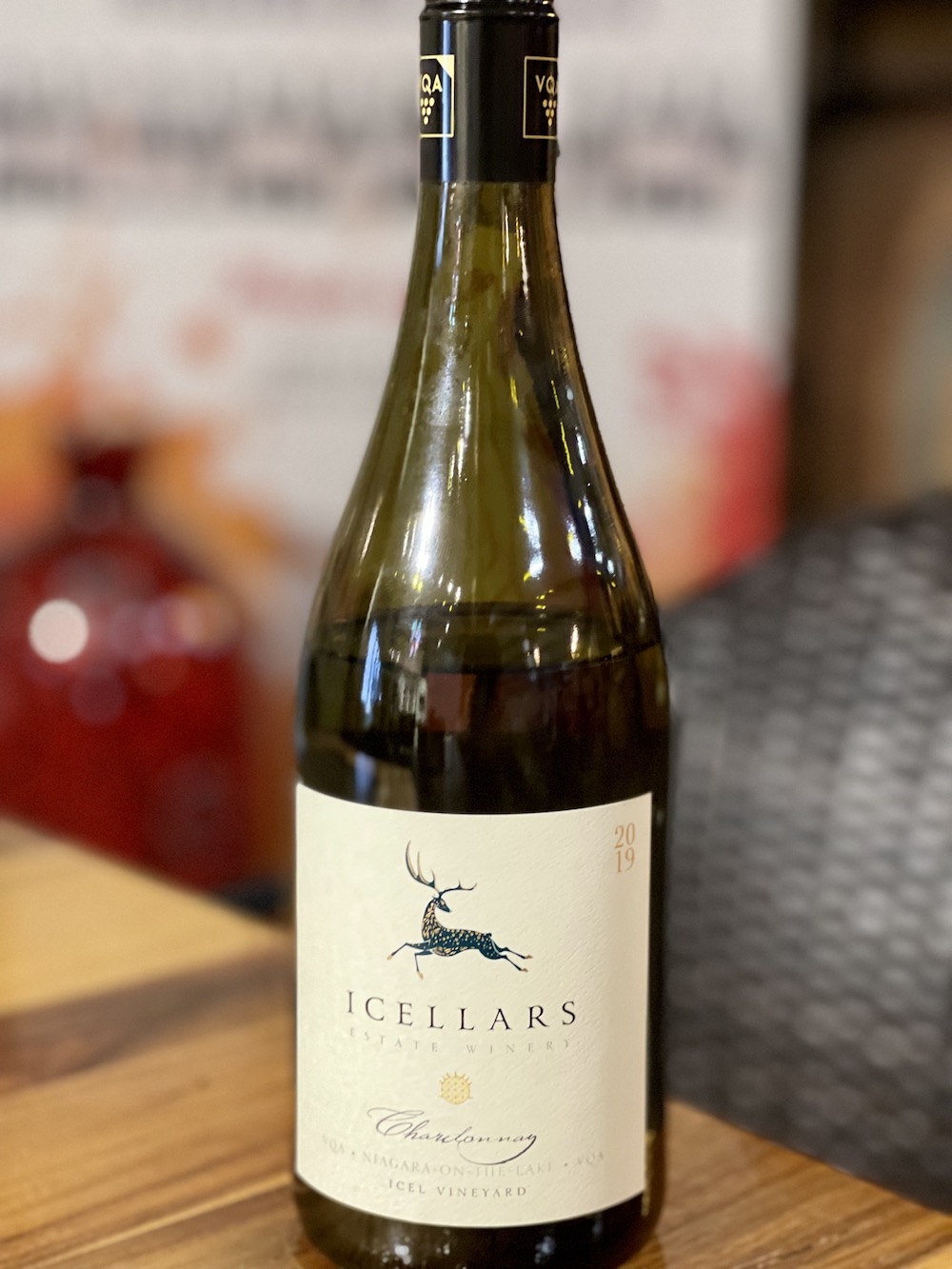
Icellars Chardonnay 2019 ($45, 92 points) — This vintage of the Chardonnay, compared to the previous one, with 18 months of oak aging, puzzles me a bit. It appears to me to be more elegant and fresh but has far more oak aging applied. It’s tightly wound on the nose but opens up to fresh pear, apple skin, bergamot, wet stones and light spice notes. It’s made in an elegant style of the palate with some saline notes, pear/apple/quince, lemon, apple, integrated spice and lovely finesse on the finish.
The rosé
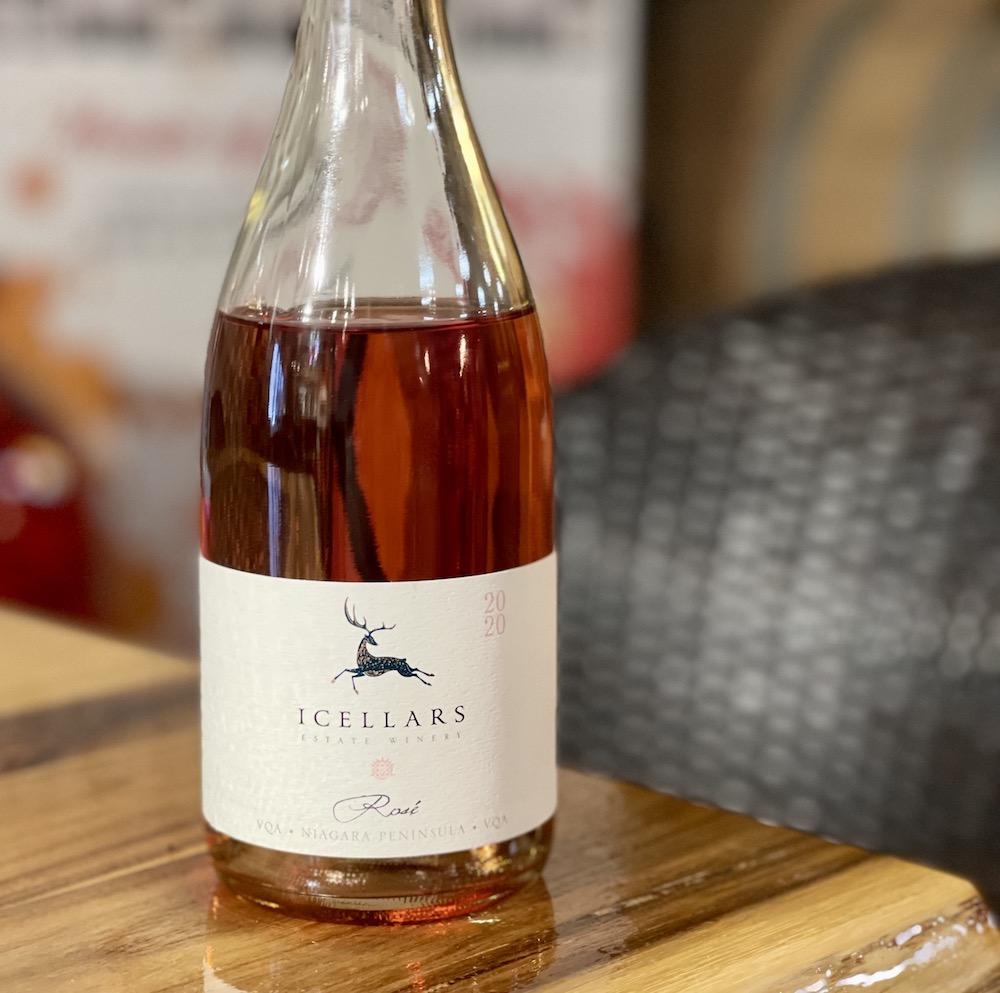
Icellars Rosé 2020 ($27, 89 points) — Made in the saignee style from a blend of six red and three white grapes, all from sourced fruit. In the end, even with nine different grapes joining the party, it’s all about the red berries and subtle citrus and herbs on the nose. On the palate, strawberries play a central role with a touch of herbs, citrus zest and just a tiny bit of sweetness on a bright finish.
The red wines
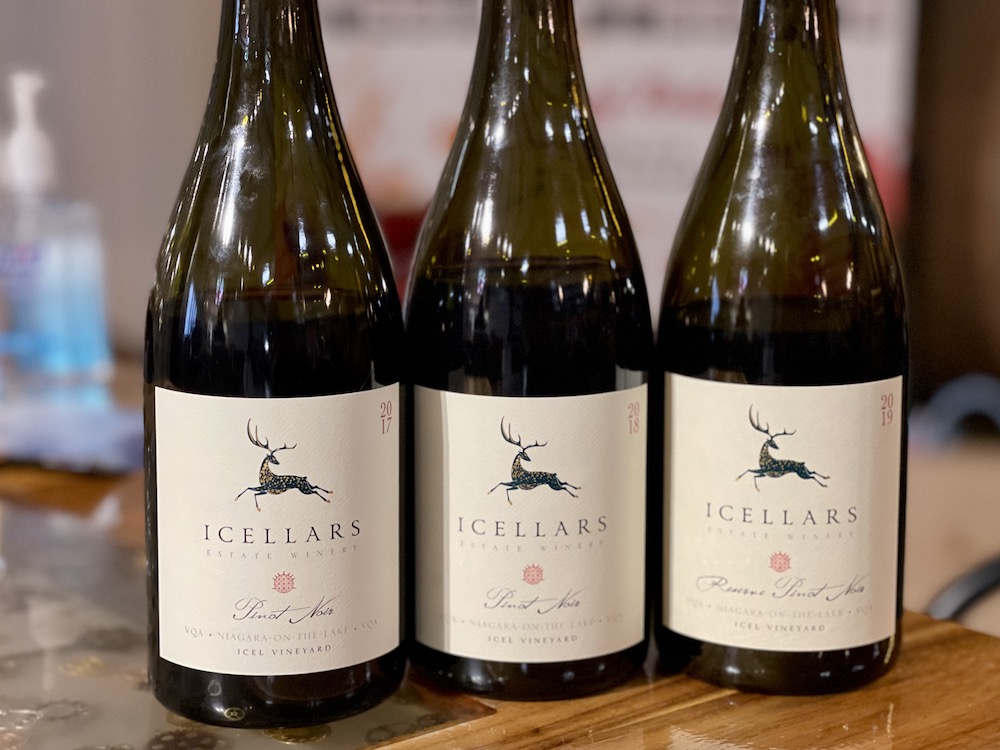
Icellars Pinot Noir 2017 ($50, re-tasted and re-scored, 91 points) — We tasted this side by side with the 2016 vintage, a much warmer growing season. This was the more elegant of the two with a nose of black cherries, brambly raspberries, lovely integrated spices, hints of anise and earth. It’s silky smooth and layered on the palate with ripe cherries, crunchy cranberries, wild raspberries, elegant spice, a floral note and length through the finish. Can cellar 5+ years.
Icellars Pinot Noir 2018 ($50, 92 points) — This is a more elegant version of the above Pinot with both wines seeing 12 months of French oak barrel aging. The 2017 was picked at a riper 24.5 Brix, while this was picked at 22.6 Brix, resulting in 13.1% abv vs. 14.3%. I prefer this more delicate style that shows fresh red berries, bramble, forest floor and light oak spice notes. It’s a bit richer on the palate with medium+ tannins, wild raspberries, cherries, meaty/earthy notes, integrated spices with length and energy through a finessed finish. Should develop nicely over the next few years.
Icellars Pinot Noir Reserve 2019 ($50, 93 points) — The reserve Pinot is sourced from the best barrels of estate fruit and spends 18 months in French oak barrels. It is all together a more complex and layered Pinot with a nose of darker berries, forest floor, earthiness, cassis, some black cherries, toasted vanilla and spice. It sheds some of the dark berries on the palate with fresher cherries, raspberry bramble, more elegance, lovely integration, fine-grained tannins, depth and spice notes with racy acidity on the finish. Lovely New World style Pinot with room to grow in the cellar.
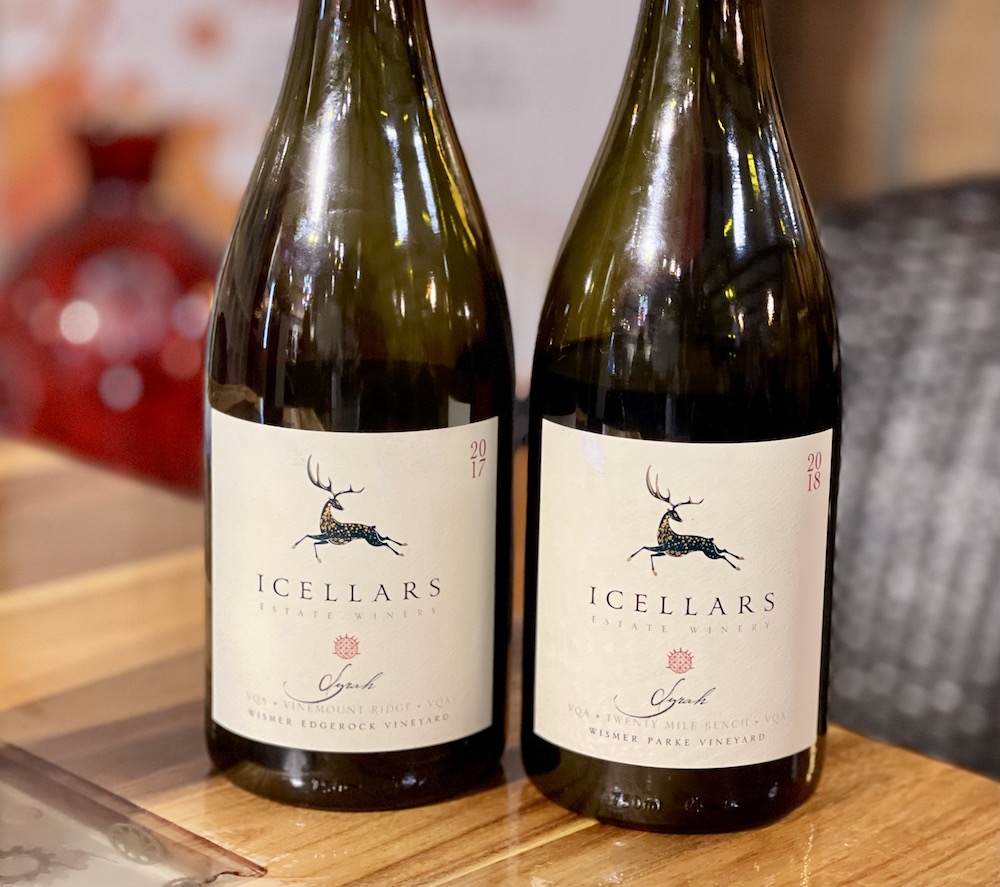
Icellars Syrah 2017 ($40, previously reviewed, re-tasted, 90 points) — This Syrah was sourced from the Wismer Edgerock Vineyard on the Twenty Mile Bench and aged for 12 months in French and American oak. It has a gamy/spicy nose of black currants, cracked peppercorns, cassis, licorice accents and oak spices. It’s smooth and rich on the palate and takes on more red fruits to go with currants, blackberries, earthy accents, rich spice notes, pepper and perky acidity driving through the finish.
Icellars Syrah 2018 ($45, 91 points) — This version of the Syrah is sourced from the Wismer Parke Vineyard and spends 26 months in oak. It has a smoky/savoury nose with charcuterie, cracked peppercorns, plums, cassis, blueberries and rich spice notes. It’s quite meaty on the palate with a savoury kick to go with dark berries, boysenberries, black cherries, pepper and spice with a firm texture guided by grippy tannins and a long, freshening finish.
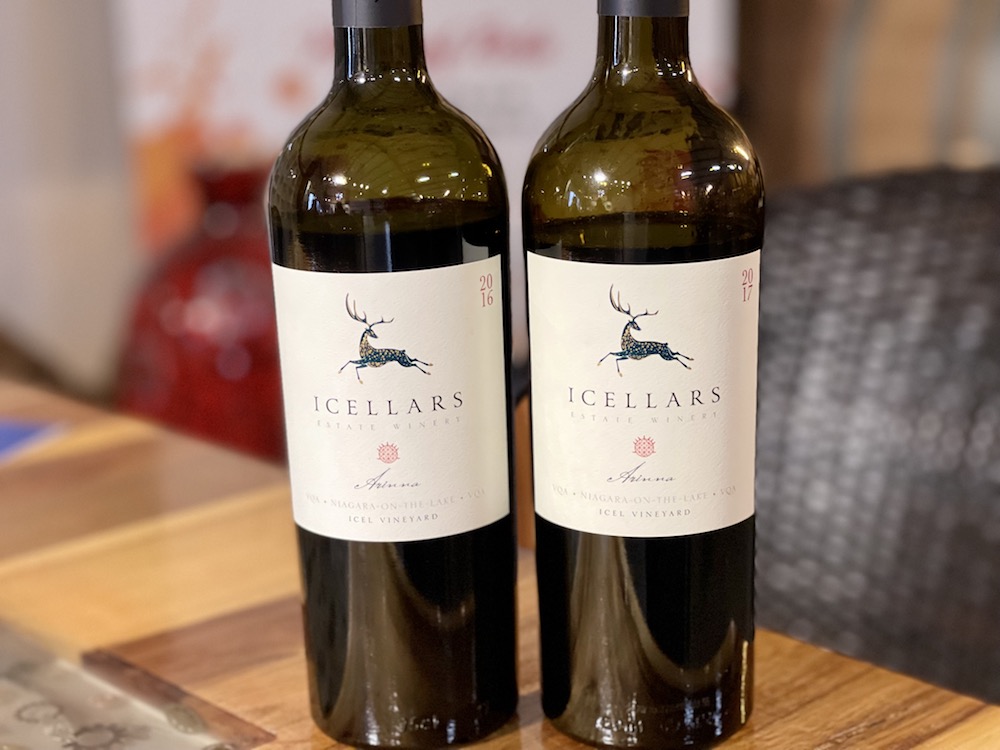
Icellars Arinna 2017 ($45, 92 points) — Named after an ancient winemaking city in the heart of what is now Turkey, this “Right Bank” styled Bordeaux-variety blend of mostly Merlot with Cabernet Sauvignon, Cabernet Franc and Malbec, all from estate fruit, is aged in mostly French oak for 12 months. It was tasted beside the sold out 2016 version. It has a bold nose of black currants, dark cherries, brambly raspberry notes, plums, earth, wet tobacco leaf and fine oak spice and toasty vanilla bean. It has a bit more finesse than the warm vintage 2016 version on the palate with big, rich, bold (but more balanced) array of black cherries, cassis, anise, licorice and earthy spicy notes that all show high intensity and power through a long, juicy finish. Can cellar this 10+ years.
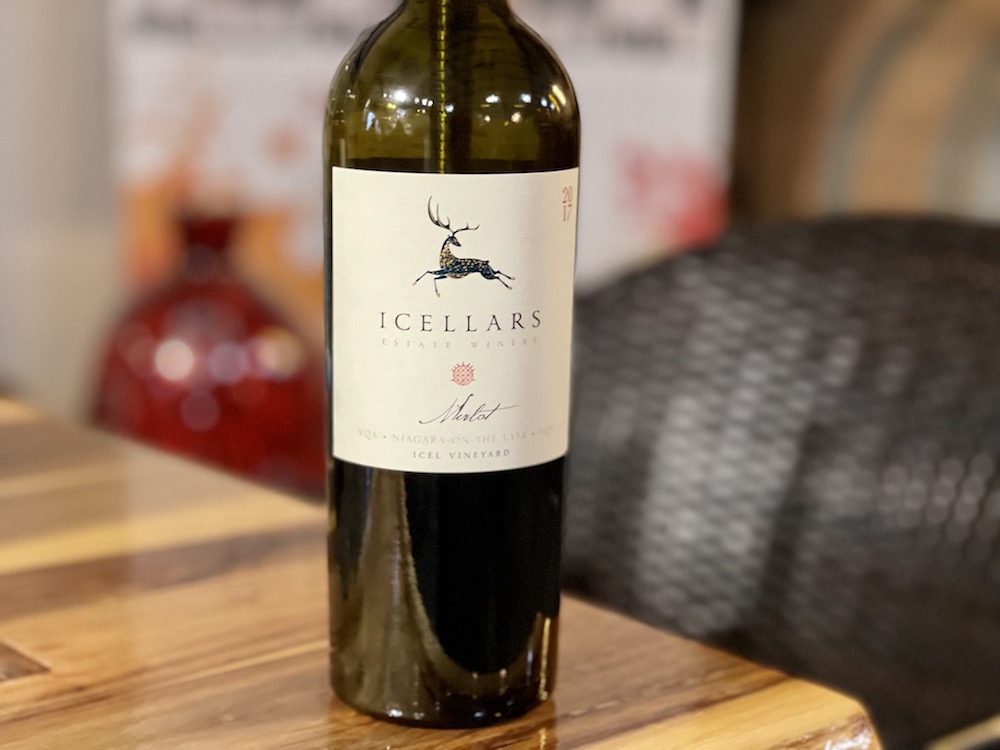
Icellars Merlot 2017 ($45, re-tasted, 92 points) — This estate Merlot is aged for 12 months in French oak barrels and is finished at 14.5% abv. Such a beautiful and rich nose of dark cherries, cassis, plums, elegant spice notes in a clean and pure style. It’s rich, layered and complex with an array of ripe and highly concentrated red berries, a touch of anise, forest berries, earth, toasted vanilla bean and baking spices with length and verve on the finish. Can cellar 7+ years.
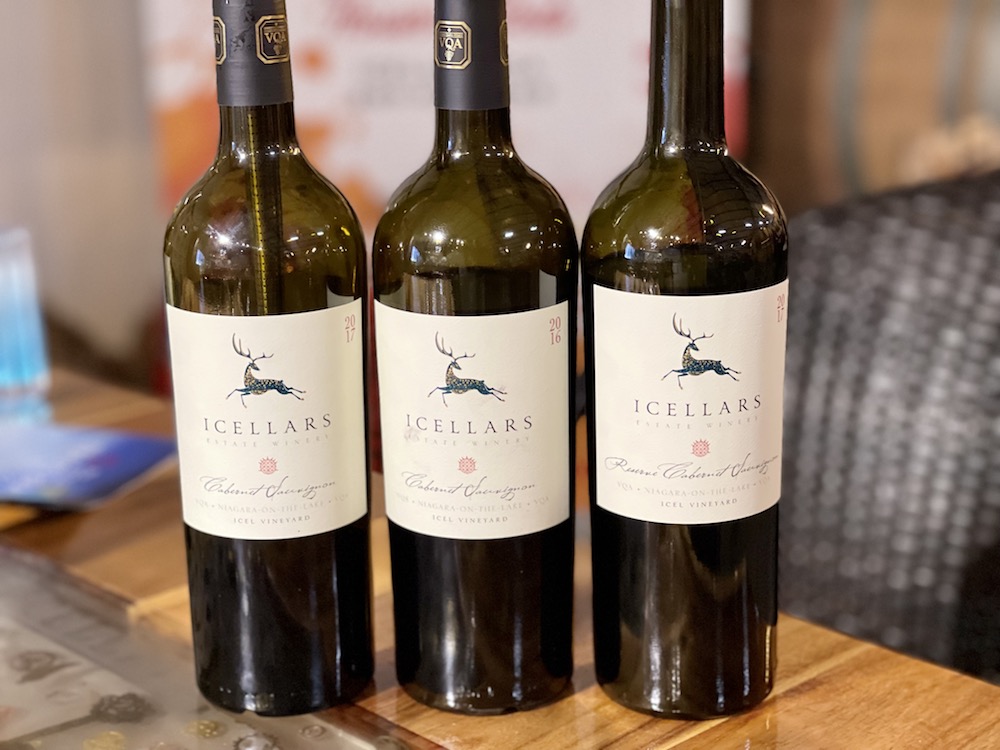
Icellars Cabernet Sauvignon 2017 ($50, 92 points) — Icel poured this next to the 2016, a big, rich booming Cab Sauv picked at 26.3 Brix and built to last forever in the cellar, and his first reserve Cabernet Sauvignon from 2017. The 2017 regular Cab is aged for 12 months in oak and finished at 14.5% abv. It shows savoury cherries out of the gate, black raspberries, red and black currants, lavish spice notes, blackberries, a touch of earth, but otherwise fairly fruit-driven. It turns to darker fruits of cassis and blackcurrants with more subtle cherry kirsch in a complex and layered style that has structure from the ripe tannins and fairly overt oak spice notes. It’s long and echoing on the finish and should age nicely for a decade and better integrate the oak spices.
Icellars Cabernet Sauvignon Reserve 2017 ($90, re-tasted and re-scored, 94 points) — Icel makes no bones about it — he is a huge fan of Cabernet Sauvignon and is committed to growing his majority stake of this variety in his vineyard, already comprising 45% of the estate plantings with more planned. This is the first “reserve” Cab Sauv culled from the oldest vines and best barrels. The grapes were picked at 25.9 Brix, cold soaked for a week, aged for 24 months in all new French oak, bottled unfiltered and unfined and finished at nearly 15% abv. It has a lovely, refined nose of currants, cassis, blackberries, caramel/toffee notes, earth, subtle cigar leaf, smoke and sweet spices. It’s lush, ripe and loaded with dense dark berries and spice on the palate with a long, luxurious finish that’s lifted by bright acidity. Can cellar 7+ years and don’t touch for at least two years or decant for two hours to open it up. A remarkable Cab Sauv from Niagara.
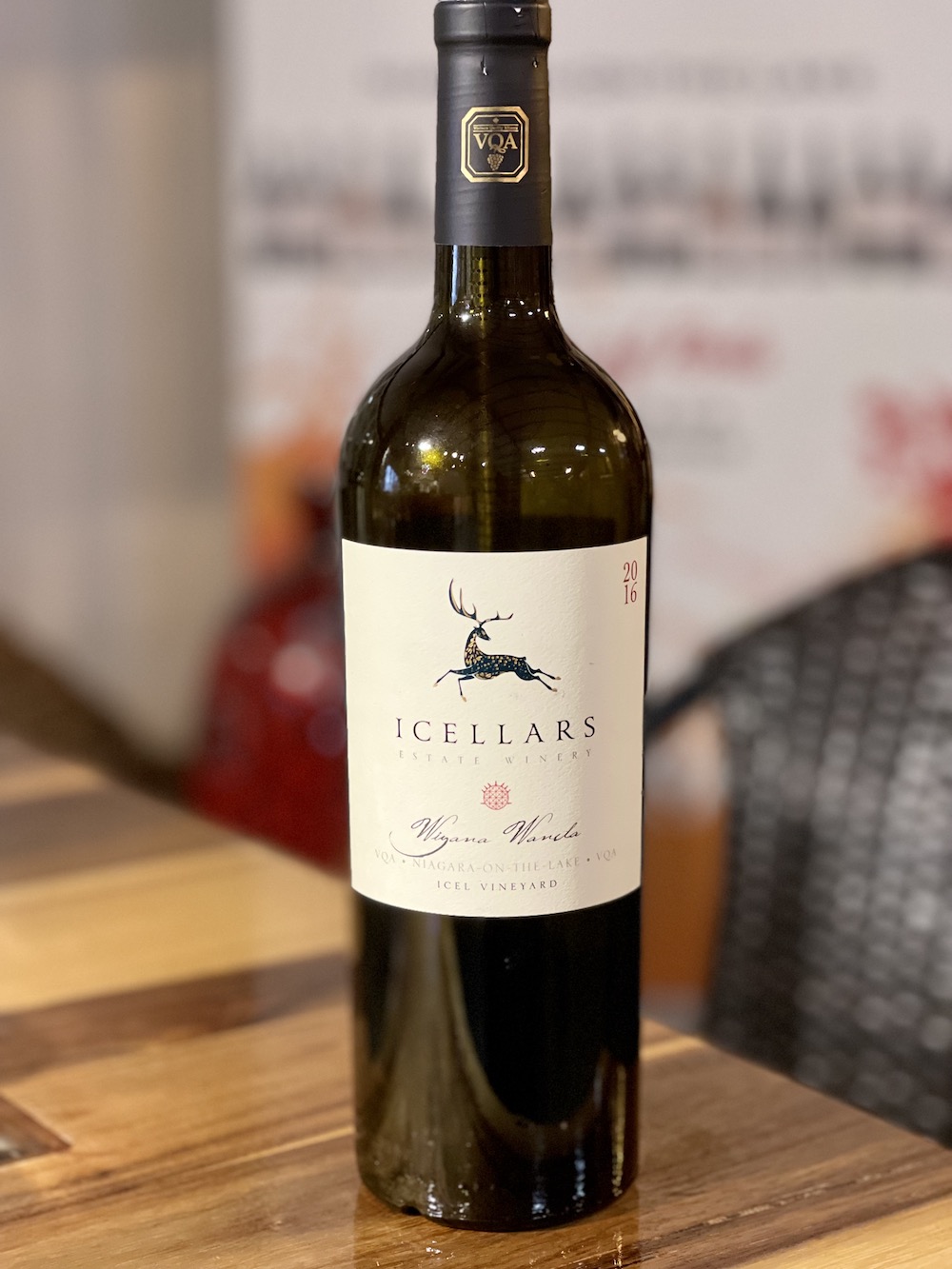
Icellars Wiyana Wanda 2016 ($85, re-tasted, 93 points) — This is the top wine made at the estate, chosen from the best blocks grown at Icellars and culled from the best barrels. The blend is 63% Cabernet Sauvignon, 20% Merlot, 11% Cabernet Franc and 6% Malbec all aged separately for 12 months in all French oak, blended together and aged a further 12 months. It’s bottled unfined and unfiltered. Adnan takes great pride in his extensive “research” as he embarked on starting a winery with little experience. He travelled to famous wine regions and tasted his way through as many wines as he could at some of the most iconic wineries on the planet. One that had a particularly profound affect on Adnan was the famed Opus One winery in Napa Valley. Opus One is the inspiration for this wine. It’s a nice tribute to his journey to get this far this fast and, frankly, an incredible story of triumph over what would seem the impossible — to make a wine at this level from scratch with limited experience in a country he only arrived in 14 years ago. But here we are, and this wine is a wonder. It’s just beginning to open up with rich black currants, blackberries, kirsch, raspberry bramble and eucalypt. The underlying meaty notes and earth, woodsy spices and depth of aromas just keep coming. It’s bold, rich, thick and loaded with dark fruits on the palate, the kind of ripe dark berries you don’t always see in Niagara Cab-based wines, with notes of earth, wonderful oaky spices all layered and complex and leading to a long, finessed finish. It’s too early to drink this wine with so many moving parts and all that tannic power, but wait for it, and you will be rewarded with a very nice Niagara cab blend. Cellar 10-15 years.
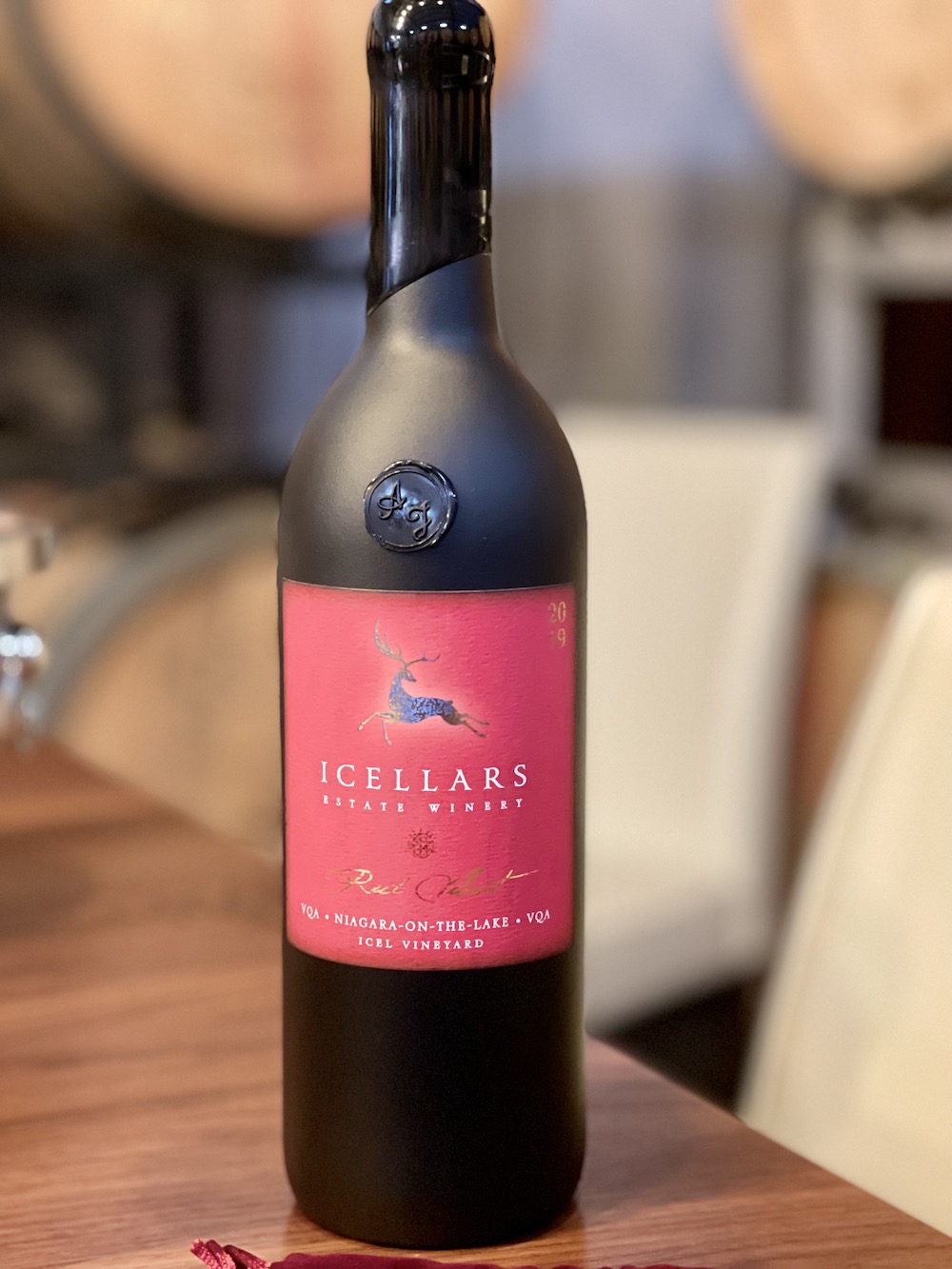
Icellars Red Velvet 2019 ($140) — This is perhaps the most unique Niagara wine I have ever tasted; there is nothing to compare it to. When tasted, it was only bottled two days before and unfair to really review this seriously or score it. I will endeavour to get back to it in a month or two. But here are my early notes. This is the first appassimento style made by Adnan and his team. The Cabernet Sauvignon (67%) was dried on racks right in the tasting facility while the two other components — Malbec (22%) and Merlot (11%) — were not dried. The Cab Sauvignon was picked on Dec. 7, 2019 in what Icel calls “the latest picking day in the Northern hemisphere” in 2019. “We probably broke a world record.” It was actually picked after a lot of the icewine in the region had been harvested and the berries were well on their way to shriveling up before they hit the drying phase and, in fact, only needed a 14 days of drying to raise the Brix nearly 10 degrees. It was aged for 24 months in three oak barrels, one new and the other two used and the wine was finished at nearly 16% abv (and likely higher). Amazingly, there is only 2.5 g/l of sugar in this wine, but, with the super-ripe fruit, it feels like much more. Such a crazy nose, not unlike an icewine smells without all the sweet honey notes, with Damson plums, compoted raspberries, kirsch, Sultana raisins, anise, red licorice, sweet spice notes and minty herbs. It is super concentrated and ripe on the palate with layers of compoted dark berries, kirsch, eucalypt, plums, raisiny notes, thick oak spices, vanilla bean and a long, boozy finish that I am anticipating will melt into the wine somewhat with long aging. I do not know where this wine is going for sure, but I do know that I want to follow its progression.
The icewines
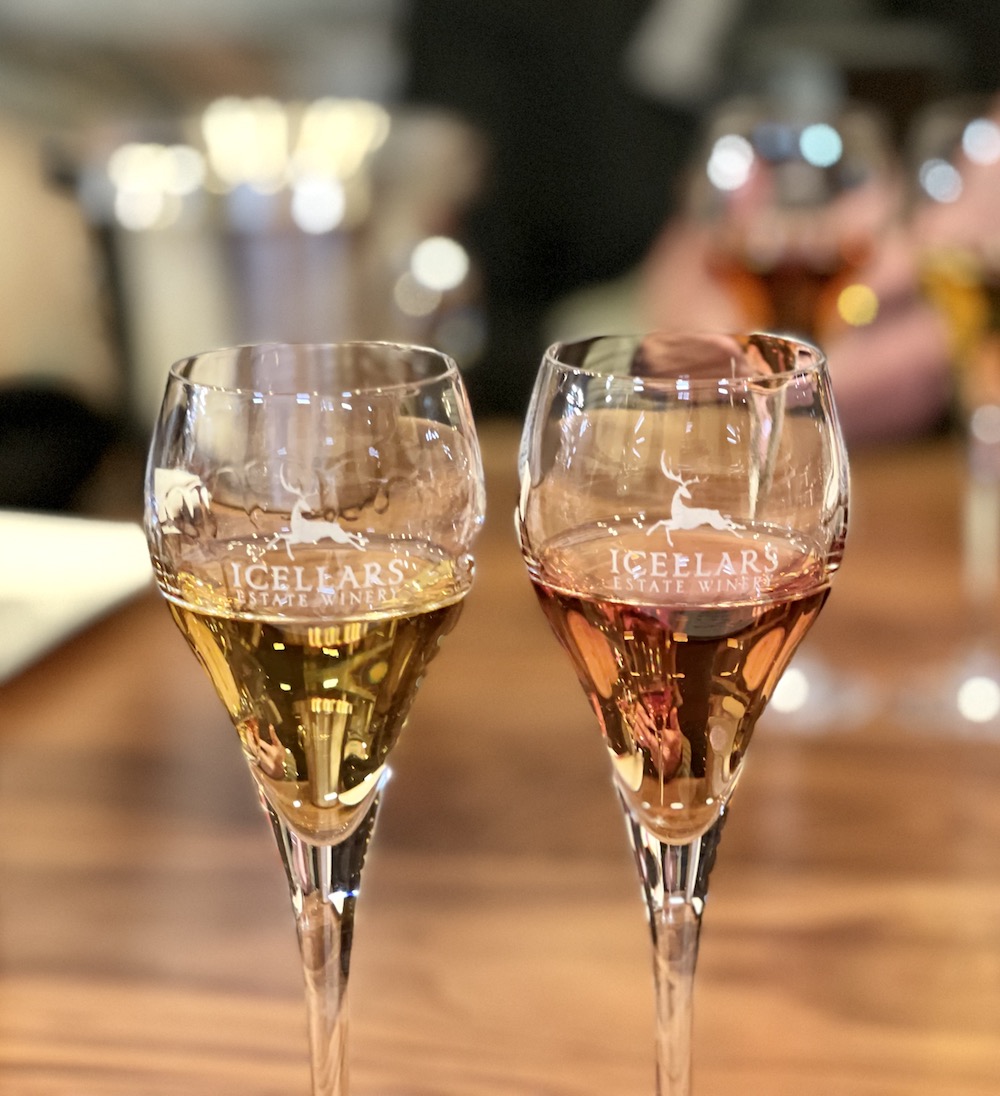
Icellars Cabernet Franc Icewine 2019 ($48 for 200 mL, 92 points) — After getting frustrated with consumers thinking the name of the winery was related to icewine, Icel finally relented and decided it was time to actually make one to appease those who ventured to Icellars in search of that sweet style of wine. He says he will only make it every three years or so and the 2016 Riesling version (poured along with this and previously reviewed) was followed by this 2019 Cab Franc version. This is the first estate icewine and was finished with 153 g/l of residual sugar and a whopping 13.6% abv, rather on the high side for icewine. It shows a rich mix of compoted red berries, herbs and a touch of crème de cassis. It’s luxurious on the palate with mulled red berries, pronounced raspberry jam notes in an elegant and somewhat fresh (for an icewine) style that will benefit from aging.






Comment here